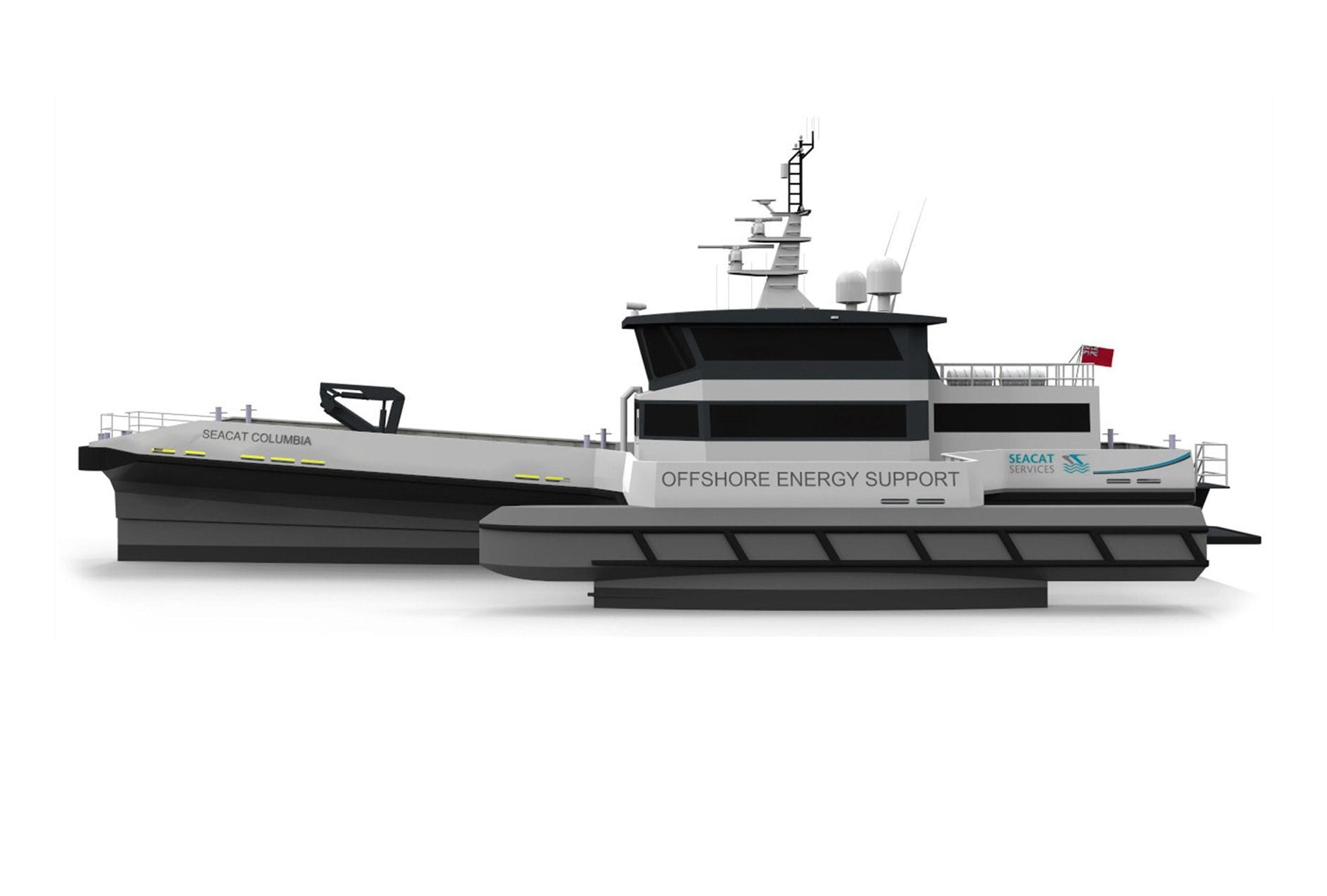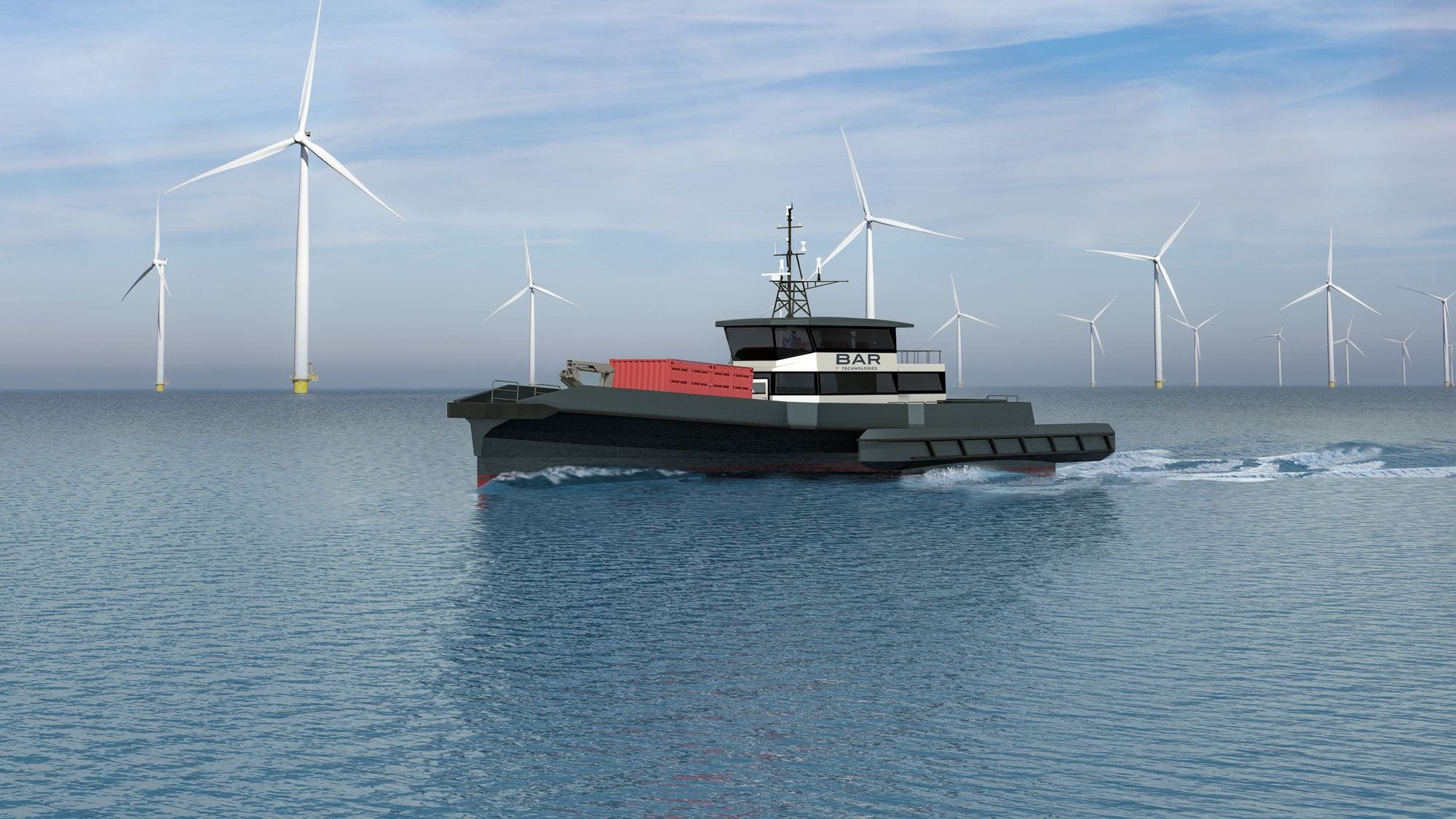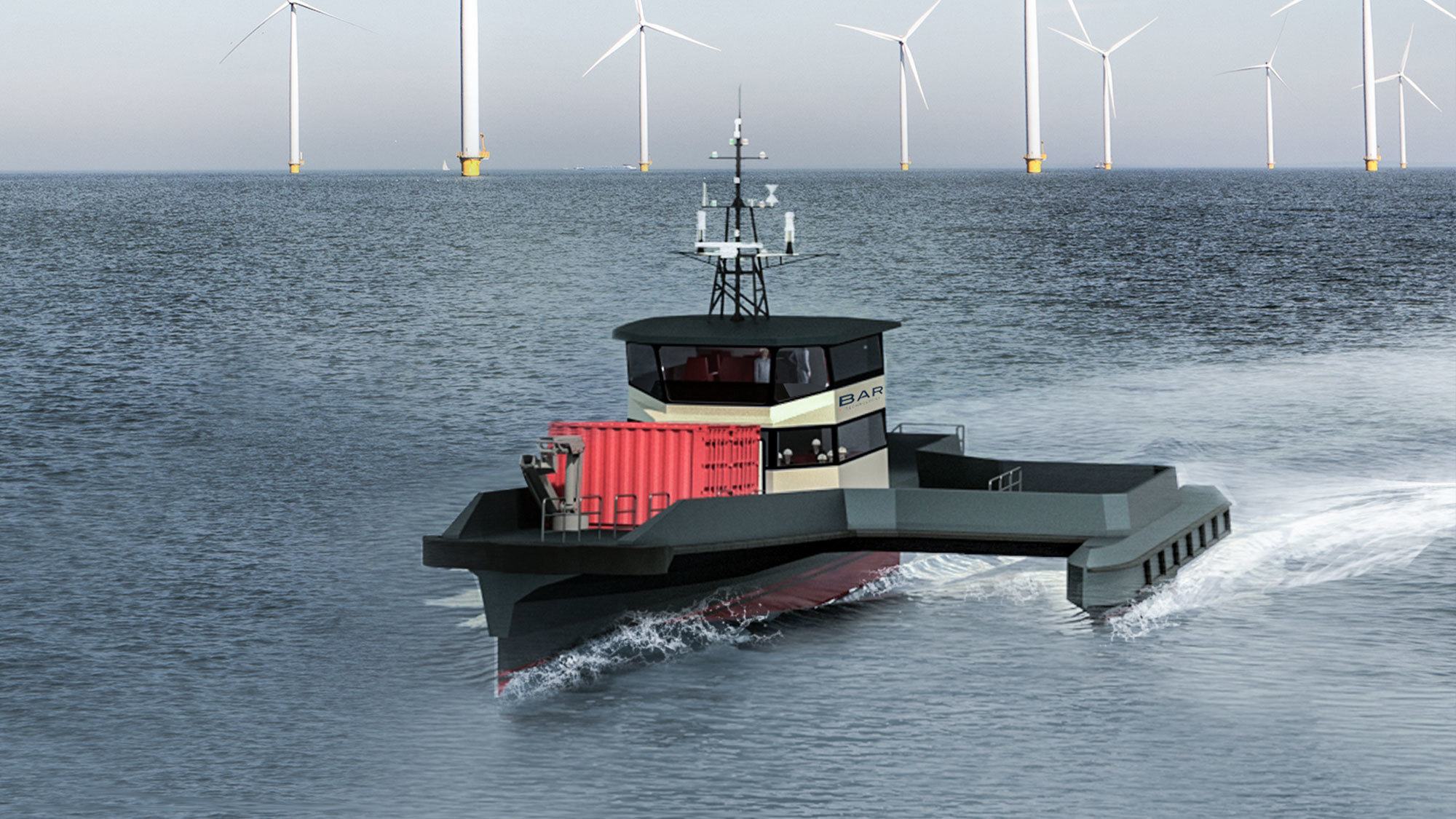The Challenge
We at BAR Technologies challenged ourselves to incorporate our broad knowledge of naval architecture, simulation, CFD and patented IP into a superior Crew Transfer Vessel for taking technicians to work on Wind Turbines (amongst other uses). The aim being to improve seakeeping and help make a green energy sector even greener by dramatically reducing fuel requirements and CO2 emissions.
Technicians transit to wind turbines in up to 2m high seas and they must arrive fit for work. If any of these “non pro” sailors are seasick then all passengers (up to 24) must return to port immediately. These abortive trips cost the OEMs large amounts of money so superior seakeeping is an essential part of the vessel’s key requirements.
Technicians must be able to safely transfer from the vessel onto the wind turbines. The boat creates a stable platform from which to climb onto the turbine, by pushing against the turbine whilst thrusting the engines. Location of the turbine and docking also requires excellent manoeuvring capability at slow speeds.


The Solution
The result is a craft that is truly novel, takes its form following extensive simulations, and is a patented form alongside the incorporated foiling system. The active foiling systems correct for pitch and roll and the narrow hull form with the swath style outrigger helping to minimise motions and fuel burn. This ensures the most comfortable journey but also an economic one.
The 30m ProA reduces vertical accelerations by between 35% and 70%, is between 30% and 50% more fuel efficient and therefore far less GHG if using similar propulsion methods (but see other drivetrain options)
With the vessel being able to operate if higher sea states than a catamaran, the turbines can be serviced and maintained on more days thus saving the OEMs downtime and considerable expense. Available for little more than a catamaran, this vessel offers superior usage for the minor increment in investment.
Efficient Hull Design
BAR’s innovative hull concept deliver significant resistance reduction:
Up to 50% @ 15kt
Up to 30% @ 25kt
Up to 50% @ 20kt
Up to 22% @ 30kt
Wellbeing - Fit for Work
The seakeeping gains by combining FOSS with an optimised hull form will deliver crews fit for work thus increasing the “Go to Work” window:
35-70% less verticle accelerations @ passenger locations
Reduced Emissions
Reduced resistance means reduced emissions:
- About 600T of C02 per annum per 12hr shift
- About 1,000T of C02 per annum per 24hr shift
Manoeuvrability
The combination of the incremental hull legnth, bow thrusters and directional jets give this craft the equivalent manoevrability to catamaran
Extended Maintenance Window
The superior seakeeping of the BAR CTV ensures fewer abortive trips and a greater operating window giving less delays and greater efficiency.
Cost of Build
The boat has been costed at a UK yard and the price is comparable to the current catamarans.



